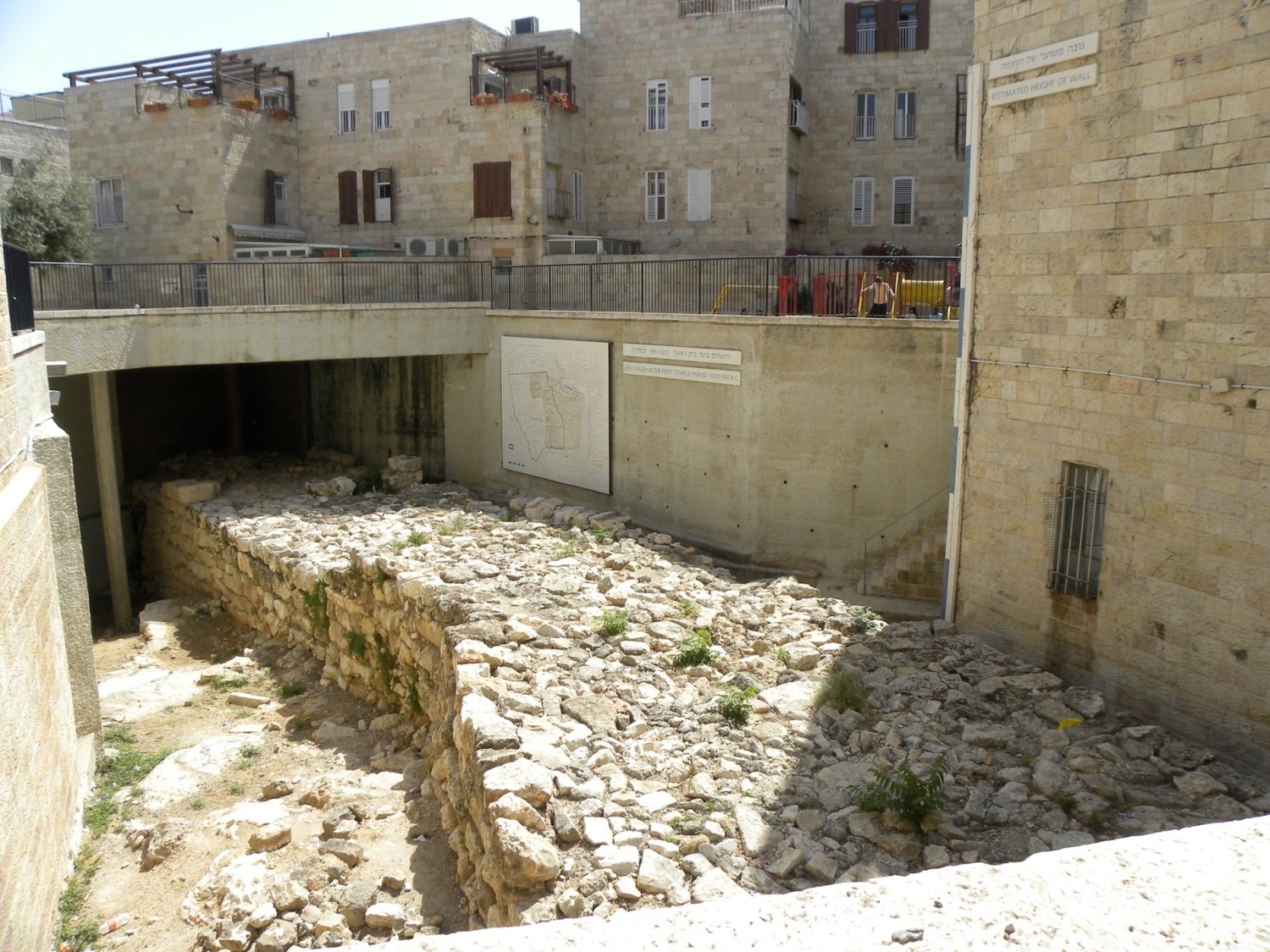The broad wall, 17 Tammuz and a time to play
Next week we commemorate the breaching of the Old City walls of Jerusalem by the Roman Tenth Legion on the 17th day of Tammuz in 70 CE, heralding the beginning of the end of the Jewish Second Commonwealth and the destruction of the Beit HaMikdash. As we gaze upon the ruins of those walls, we will fast, and some of us will cry, remembering how 2,000 years ago, peaceful streets were filled with the triumphant cheers of Roman legionnaires bent on our destruction.
But there is another wall in Jerusalem that is worth thinking about, and that wall pre-dates the Roman destruction by almost 1,000 years. It is covered with moss and seeped with history. Most tourists don’t see it.
Twenty-seven-hundred years ago, the neighborhood bully was Assyria, known in the Bible as Ashur. Sargon, the Assyrian general, had been waging a campaign of terror over the entire Middle East and had mustered the largest army the world had ever seen — 185,000 men, known in the Talmud as Sancheirev, which comes from the word churban (destruction). After destroying the 10 northern tribes in a violent military campaign, Sancheirev set his sights on the pearl of the Middle East: Jerusalem.
At that time, the southern kingdom of Judea was not much to speak of. Encompassing just 20 to 30 square miles around Jerusalem, with little in the way of a standing army and no natural barriers to rely on, the Jews who managed to stay ahead of the advancing Assyrian army escaped into the walls of Jerusalem.
Soon the city was overflowing with 30,000 Jews, desperate to survive the coming onslaught. The king at the time was Chizkiahu (Hezekiah), who was also a prophet, and the Tanakh tells us how he set about fortifying the walls of the city, which had fallen into disrepair. Especially, how he built a broad wall to encompass all the homes that had sprouted up in the northwestern corner of the city outside the walls. Indeed, in their haste to build this wall ahead of the advancing Assyrians, they built up two outer walls, throwing stone and mud inside to achieve a thick wall against the Assyrian battering rams. One has the sense the last stones were set in place just in time.
What must it have felt like, to see 185,000 men bent on your destruction coming up through the valley and surrounding your home?
There were 30,000 Jews trapped inside the city, and things soon went from bad to worse. There was no food, and the Jews were starving to death. They could not run, nor did they have an army with which to fight, and not for the first time and certainly not for the last, they were not given the option of surrender. So Chizkiyahu did what Jews have always done: he called the city together in prayer.
These Jerusalemites represented the entire Jewish people; no one else was left. The northern tribes had been completely lost, and there were as yet no Jews living in a Western Diaspora. It should have ended there, with a final solution to the Jewish problem.
But the people prayed, and Hashem performed a miracle. In the middle of the night, the entire Assyrian army fell dead before the angel of the L-rd.
(Amazingly, this story which is told partly in the 19th chapter of the second book of Kings, is also described in the ancient writings of Herodotus, the historian of Alexander the Great, who reports that the 200,000 strong Assyrian army was wiped out by a mysterious plague outside the walls of Jerusalem.)
Today, you can see this wall, discovered courtesy of Jordanian mortar fire in the Six Day War. You can see how the wall is built as a broad wall, rising on top of ancient homes and built exactly as the Bible describes.
There are no words to describe what it feels like to stand above such a wall, listening to the wind and the silence. It is almost too much to take in. So you look at one stone, and you wonder where these ancient Jews found the faith to build such a wall and believe they would survive.
Right above this ancient broad wall sits a playground, where the Jewish children of the Old City come to play and laugh in the sunshine.
Twenty-five-hundred years ago, amidst the flames of the destruction of the Temple, the prophet Zechariah (8:4-5) issued an amazing prophesy: “There will come a time, so says the Lord of Hosts, when the old will yet sit in the streets of Jerusalem, leaning on their walking sticks from length of days, and the city streets of Jerusalem will be filled with the sounds of the children, playing in her alleyways.”
These children, playing in that playground, above that wall, are the fulfillment of a centuries old dream. The Jewish dream has never been about armies marching in; it has been that one day the children will come back to play.
After 2,000 years of wandering, we are home. And despite everything, for the price of an El Al ticket, anyone can become a part of this journey begun so long ago in the midst of Egyptian bondage.
And if you come this summer, and walk through the alleys of Jerusalem, you can see it too, this incredible other old wall, waiting for so long for all of her children to come home to play. And while we mourn what we lost, we feel blessed for what we have merited to rebuild.
Originally published in July 2011.

 56.0°,
A Few Clouds
56.0°,
A Few Clouds 





